EAZE
Thriving as an Executive with
Executive Dysfunction in the Modern Workplace

TL;DR
The implications of ADHD persist across various life domains, including workplaces. Challenges include a complex set of cognitive abilities called Executive Functions, directly affecting the ability to perform in leadership roles. For my Master's Capstone project, I worked on the project aiming to help ADHD adults overcome these challenges and feel confident in taking up leadership roles.
Duration
Aug 2023 - May 2024
9 months
Role
Literature Review
User Interviews
Digital Ethnography
Wireframes, Hi-Fi
Usability Testing
Service Blueprinting
Tools
Figma, Adobe After Effects, iMovie

Over the years I've found that I'm great at being second in command. I could run small projects as long as I had somebody above me holding me accountable. Every time I'm asked to be in charge, I fail catastrophically at it. I either have the energy to organize and prioritize tasks, or get those tasks done myself, not both.”
- Shubham (user)
WHY?
Symptoms of ADHD can directly affect workplace performance and discourages adults to take leadership roles. I aim to help ADHD adults overcome these challenges and feel confident in taking up leadership roles.
Symptoms of ADHD can directly affect workplace performance and discourages adults to take leadership roles. I aim to help ADHD adults overcome these challenges and feel confident in taking up leadership roles.
HOW?
Through a comprehensive review of existing research, I identified specific cognitive challenges faced by individuals with ADHD in the workplace, such as - staying focused on tasks or activities, organizing thoughts and tasks, etc. I then developed specific features into existing product management tools focusing on improving time management, task prioritization, and collaboration skills.
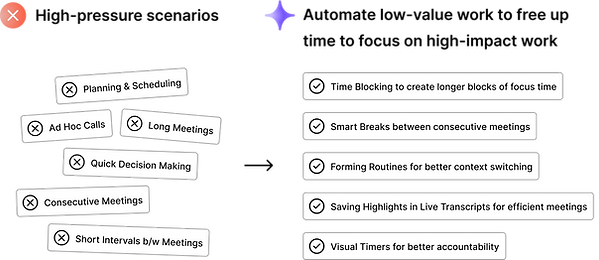
WHAT?
An all-in-one productivity management application that integrates with various product management softwares such as Asana, Zoom, and Google Calendar, assisting managers with ADHD in their day-to-day workflows. The application includes specific functionalities aimed at improving touchpoints such as:

Project Planning and Productivity
(e.g., time management, task prioritization)
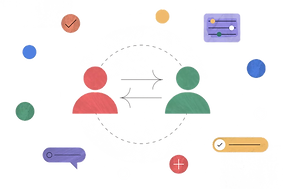
Collaboration with Cross-functional Teams
(e.g., meeting management, task delegation, email responsiveness)
INTRODUCTION
ADHD and Executive Dysfunction
Attention Deficit/Hyperactivity Disorder (ADHD) is a neurodevelopmental condition that can persist from childhood into adulthood. More than 366 million adults worldwide suffer from ADHD.
Adults with ADHD deal with the several challenges including a complex set of cognitive abilities clustered under the term executive functions that directly affect workplace performance.
1
Difficulty paying attention to details, making careless mistakes.
3
Time blindness, inability to plan for future events.
2
Trouble organizing materials and setting schedules.
4
Difficulty analyzing or processing information.

DIGGING DEEPER
Interviewing adults with ADHD and their co-wrokers revealed that work environments play a major role in exacerbating or alleviating ADHD challenges. The high-demanding nature of leadership roles can discourage ADHD adults they often end up turning them down.
Masking Symptoms
Many individuals "mask" their ADHD symptoms, leading to burnout. The realization of ADHD symptoms can affect self-confidence.
Task Initiation
Shorter blocks of time can lead to mental block of task initiation. Procrastination and inability to stick to schedules is a major challenge, leading to anxiety.
Inattention
It’s difficult to stay focussed at a task or a conversation for an extended period of time. Long meetings are particularly challenging.
Context Switching
Task switching is difficult. Impromptu meetings can increase cognitive load and affect memory.
"I can’t multitask if my life depended on it. If I’m working on multiple projects, attending back to back meetings, I lose the connection between them. I keep forgetting about the connection or context when it has multiple aspects involved."
"I was offered my boss' job but I turned it down. I hyper-fixate on doing the best job on that, but as soon as they say I'm in charge I'm like are you sure?"
ECOSYSTEM MAP
Using insights from above secondary and primary research, I created an Ecosystem map to provide a structured and comprehensive representation of the relationships, interactions, and touchpoints at a workplace.
Ecosystem mapping allowed me to analyze the existing interactions at the workplace. Using insights from interviews and digital ethnography, I identified key components that I can focus on during the next phase of the project.
Decision Making
Improving Focus
Cross-Collaboration in Meetings
Planning and Prioritizing
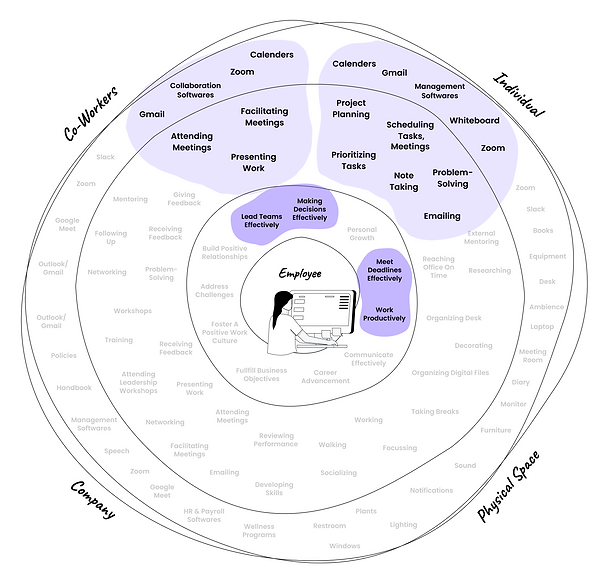
DISSECTING MANAGER'S SCHEDULE
Connecting insights from research and the journey map helped me realize a larger aspect about leadership that puts a lot of pressure on executive functioning of ADHD adults.

Planning projects & team schedules
-> difficulty multitasking and prioritizing -> procrastination
Several long meetings
-> difficulty retaining attention -> processing complex information
Consecutive meetings
-> difficulty switching context -> processing complex information
Quick decision making
-> careless mistakes -> mental fatigue
Short intervals between meetings
-> difficulty initiating tasks -> unable to focus -> procrastination
Impromptu calls aka “Quick Call?”
-> distractions -> difficulty regaining focus on other tasks
KEY INSIGHTS
Managers typically work in hourly intervals and can easily accommodate meetings. These smaller time blocks, hourly intervals, can be challenging for individuals with ADHD.
Their cognitive processes may require more extended periods to get into a state of flow and hyperfocus, making it harder for them to manage tasks effectively within the constraints of smaller time blocks. ADHD individuals often find it more conducive to work in larger time blocks or chunks to minimize distractions and make the most of their attention and cognitive resources.
Connecting insights from research and the journey map helped me realize a larger aspect about leadership that puts a lot of pressure on executive functioning of ADHD adults which helped in framing my problem space.
Project Opportunity
HMW help executives with ADHD balance between being
Flexible and Responsive while maintaining
Focus and Sustained Engagement in their work

CO-DESIGN WITH USERS
I conducted a workshop with users to uncover pain points, unmet needs and together we identified touch points and strategies used in various scenarios and how effective they are at assisting the users.

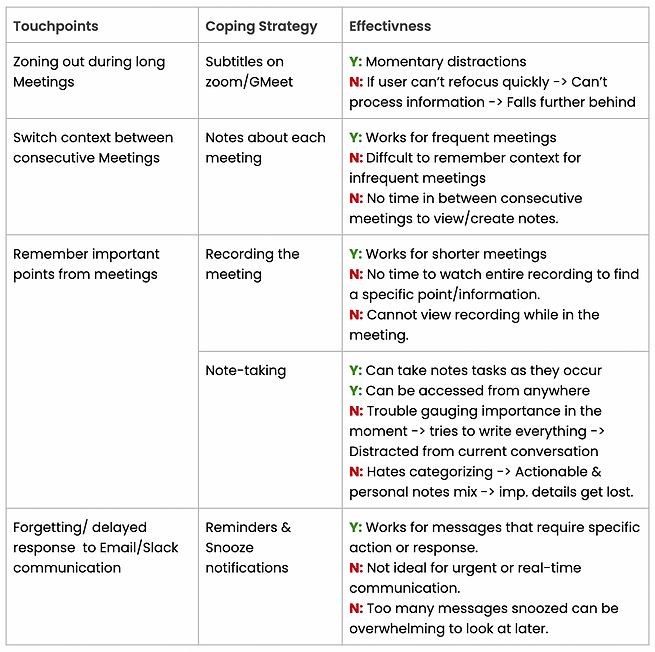
Further, we came up specific user stories and feature recommendations for existing tools and softwares that managers use, that will help them to focus, refocus and egagage in their day-to-day tasks.
User Story
As someone who is
easily distracted in long meetings
I want to
organize my thoughts immediately
so that I can
efficiently sort through them and revisit them later.
Concept
Collaboratively highlighting notes from transcripts with tags and categories to quickly capture thoughts during meetings. Also, reducing the need to switch platforms during meetings by integrating necessary actionable functionalities into Zoom’s platform. This promotes immediate post-meeting task completion and minimizes procrastination.
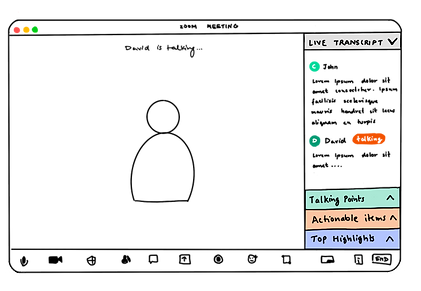
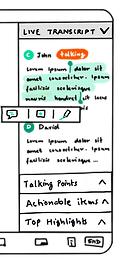
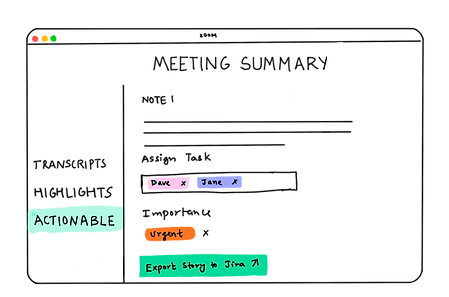
CONCEPTS
Ultimately, we decided to go ahead with AR technology as it can provide individuals with autism with a visual and interactive way to explore and navigate the world around them, which can help to improve their spatial awareness and orientation skills.
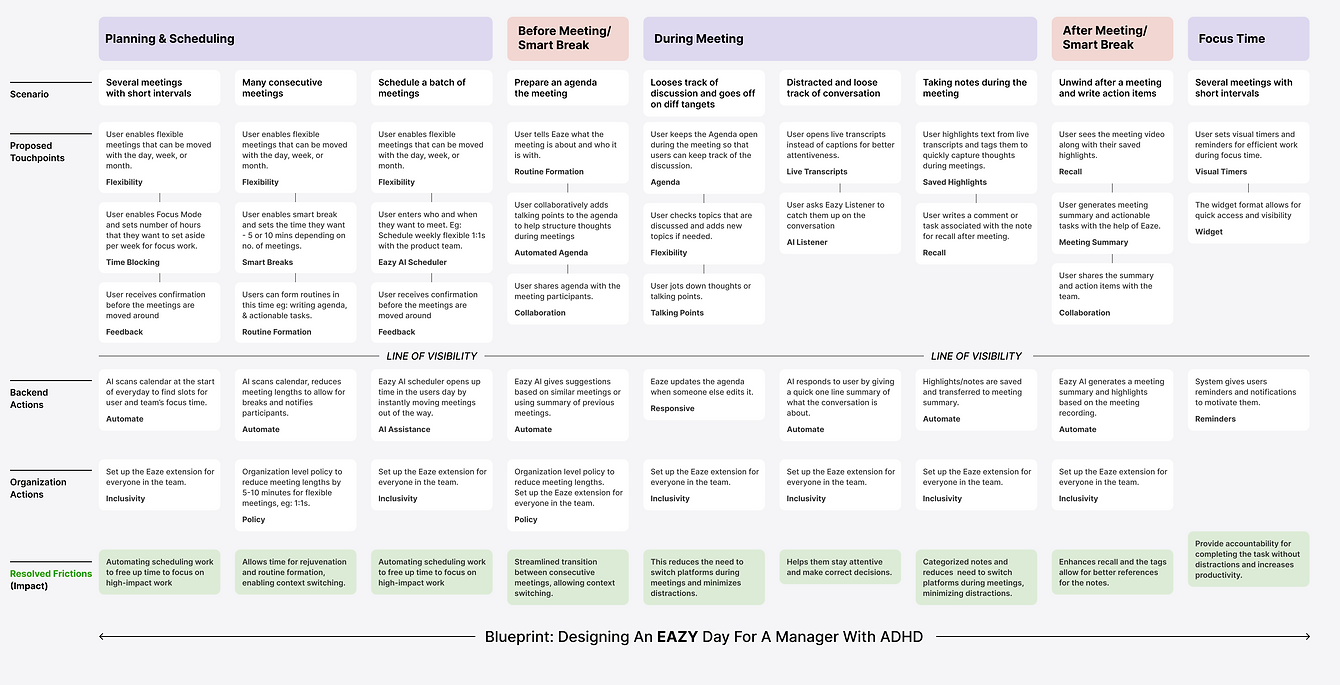
Time Blocking

During onboarding, the users can toggle sensory filters as per their needs and fill out their peers’ information for location sharing. The design is intentionally minimal so as to not overstimulate the user.
Smart Breaks

During onboarding, the users can toggle sensory filters as per their needs and fill out their peers’ information for location sharing. The design is intentionally minimal so as to not overstimulate the user.
Routine Formation

During onboarding, the users can toggle sensory filters as per their needs and fill out their peers’ information for location sharing. The design is intentionally minimal so as to not overstimulate the user.
Live Transcripts

During onboarding, the users can toggle sensory filters as per their needs and fill out their peers’ information for location sharing. The design is intentionally minimal so as to not overstimulate the user.
Meeting Summaries

During onboarding, the users can toggle sensory filters as per their needs and fill out their peers’ information for location sharing. The design is intentionally minimal so as to not overstimulate the user.
Hyper-Focus Mode












